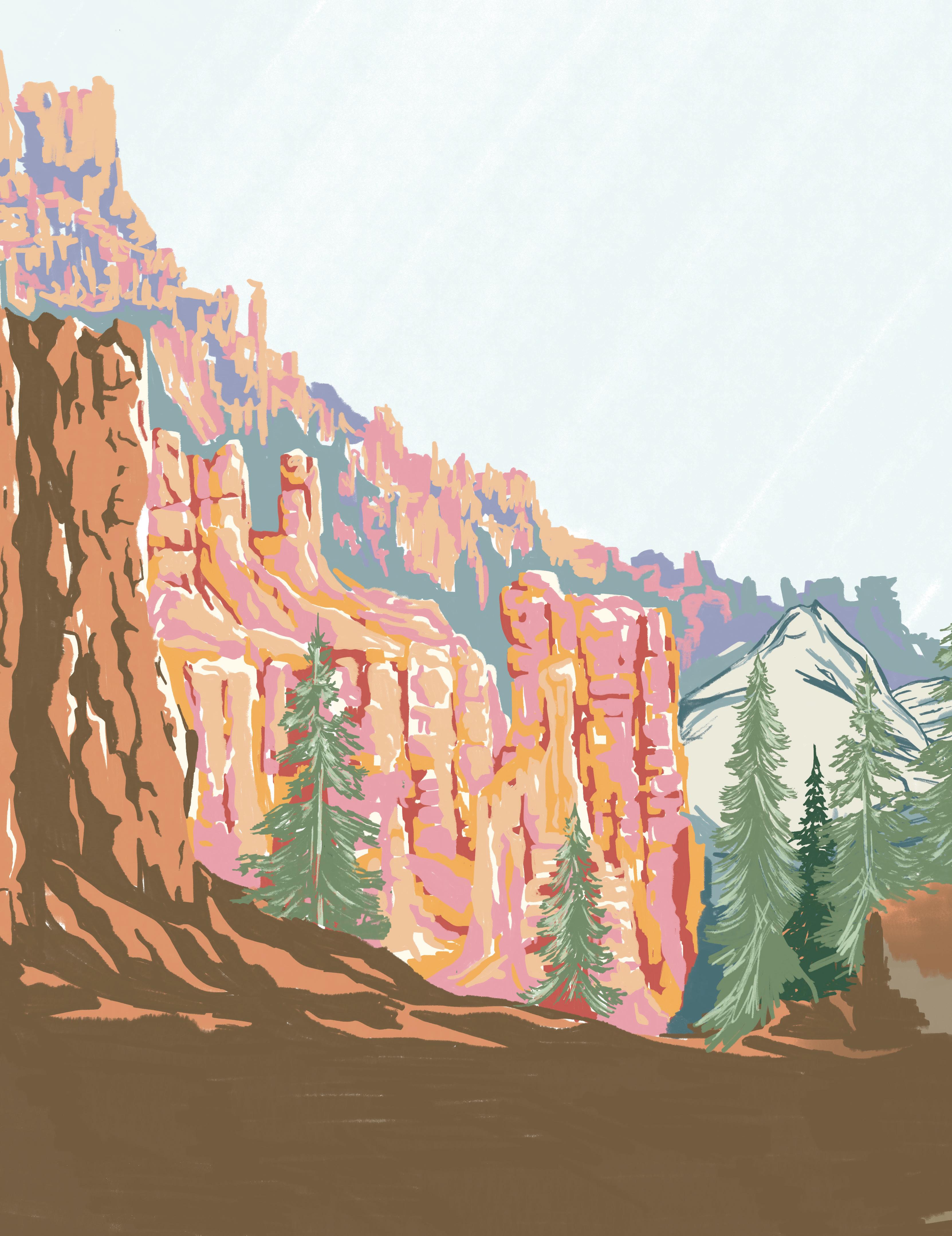
SOUTHWEST UTAH PUBLIC HEALTH FOUNDATION FALL 2024
DANGEROUS ANIMALS
PG. 16

HEALTHY WEIGHT
PG. 4
MOSQUITO PREVENTION
PG. 28




SOUTHWEST UTAH PUBLIC HEALTH FOUNDATION FALL 2024
DANGEROUS ANIMALS
PG. 16

HEALTHY WEIGHT
PG. 4
MOSQUITO PREVENTION
PG. 28


From an annual printing that used stock art and advertisements, and was distributed at a few pick-up locations, HEALTH Magazine has grown into an award-winning publication that is now mailed free of charge to the residents of Southwest Utah three times a year. As part of our mission to protect the health of our community through the promotion of wellness and prevention of disease, HEALTH Magazine is becoming a familiar source of reliable information for many of you. Here’s some examples of feedback we’ve received:
“I absolutely LOVE this magazine. Thank you so much for all the preparation and work that goes into it. I find the articles most informative and helpful.” - “I have a degree in Health Promotion, so it always excites me to read about health topics. The magazine is always so fun to read, and has such beautiful artwork.” - “I always find it interesting and informative.” - “I’m very impressed. Great topics, well written! Well done!” - “Thank you for doing something so unique and beautiful that represents our home!”
I hope you enjoy this, our 26th issue, as well. If you have feedback, suggestions, or ideas for HEALTH Magazine, please email us at info@swuhealth.gov. Thank You!

Sincerely, David W. Blodgett, MD, MPH Southwest Utah Public Health Department (SWUPHD) Director & Health Officer

BEAVER
75 W 1175 N Beaver, Utah 84713 435-438-2482
GARFIELD
601 E C enter Panguitch, Utah 84759 435-676-8800
IRON
260 E DL Sargent DR. Cedar City, Utah 84721 435-586-2437
KANE
445 N orth Main Kanab, Utah 84741 435-644-2537
620 S 400 E St. George, Utah 84770 435-673-3528



By David W. Blodgett MD, MPH
In previous issues of HEALTH Magazine, we have introduced the concept that there are certain health practices that result in big differences for longterm health. If you take what we’ve called the “Big 4” and consistently implement them in your life, you are 70% less likely to develop chronic diseases or die early.
The Big 4 are:
• EAT ENOUGH FRUITS AND VEGETABLES
• EXERCISE
• MAINTAIN A HEALTHY WEIGHT
• DON’T SMOKE
We’ve also recently emphasized two additional factors that significantly im-

pact health outcomes; adequate sleep and avoiding alcohol consumption.
There are countless opinions about best health practices and many have some truth to them, but the Big 4 consistently rise to the top as the leading contributors to a longer and healthier life. In the field of public health, we study the diseases responsible for the most deaths (heart disease, cancer, and stroke) as well as the underlying factors that lead to those deaths (such as cigarette smoking, inactivity, poor diet, and alcohol consumption).
In our data-drenched society, it can be difficult to sort through the noise to

identify the most critical components of health improvement; the most important over the sensational. My hope is to persuade you to return to the basics of living a healthy lifestyle; what we sometimes call the “things your mother taught you”.
Ironically, with all the health-focused information available, very few of us have mastered the Big 4 (less than six percent of adults in the United States, in fact), so there is plenty of improvement to be made. This article will address the final topic we haven’t covered yet from the Big 4: maintaining a healthy weight.
The statistics about being overweight in the USand the world - have been concerning. A few years ago, it looked like the increasing weight trend might have topped out, but the COVID years seem to have extended it and the latest data shows we are still headed in the wrong direction. Today, about 40% of American adults are obese, and another 30% are overweight. The trend is also alarming in children, where obesity rates are 12.7% among 2 to 5-year-olds, 20.7% of 6 to 11-year-olds, and 22.2% of 12 to 19-year-olds. This represents a doubling of obesity rates in children since 1990.

OBESE
HAVING EXCESS BODY FAT (BMI) OF 30+ THAT PUTS HEALTH AT RISK
These trends are worth paying attention to, because being overweight is a significant predictor of chronic disease and early death. Often it is found alongside higher blood pressures, higher blood sugars, and higher cholesterol levels, which are all indicators of chronic diseases to come. The Centers for Disease Control note that being overweight has been linked to the following list of diseases and health risks: high blood pressure, high cholesterol, type 2 diabetes, heart disease, stroke, gallbladder disease, osteoarthritis, sleep apnea and breathing problems, many types of cancers, lower quality of life, mental illness (such as clinical depression and anxiety), body pain, difficulty with physical functioning, and early death.
There are several ways to find out where you fall in the weight spectrum. Many healthcare providers use body mass index, or BMI, as a screening
tool to identify health risks based on the relationship between your height and weight. Another way to monitor healthy weight is to focus on abdominal body fat, which is an important indicator of the impact extra weight will have on health. This is done by measuring belly circumference at the navel. A measurement of 40+ inches in men or 35+ inches in women is an indicator of obesity. You can also use the waist-to-hip ratio (WHR) method.
Here’s the good news: studies show that there are significant benefits from even modest weight loss, so having a perfect BMI shouldn’t be the goal. For people who are overweight, losing 5 to 10% of their body weight has been shown to dramatically improve long term health outcomes. If you are obese and have prediabetes, losing 7% of your body weight results in a 68% reduction in the risk of developing actual diabetes. As another example, every pound of weight you lose results in four less pounds of stress on your knees when you walk.
Weight loss seems to be where our Big 4 indicators come together; eating five one-cup servings of fruits and vegetables daily and exercising for at least 150 minutes a week will help reduce excess weight and maintain a balance once we get there.
It is important not to think of weight loss as a fast, one-week process. Many of the people I have known who were the most successful at losing and keeping off weight used a gradual approach. It works best to lose one or two pounds a week so your body doesn’t react as if it were starving. Most Americans gain about one pound a year through their adult lives, so perhaps the best place to start is to make adjustments in diet and exercise as our calorie needs decrease with age.
Another principle I have found to be true is this: don’t drink your calories. If you are trying to stay within your recommended calories per day, 200 calories from a soda puts a big dent in your allowance with no nutritional value. Sugary drinks go into fat storage while leaving your body wanting more.
Finally, the foods you have in the house will be the foods you will eat. You can beat temptation by keeping your home free of junk food in the first place, replacing it with healthy food and snacks that you and your family enjoy eating.
I am convinced that most of you reading this can easily begin to do a little better in at least one of the Big 4 healthy behaviors. Improving in even one area will make it easier to improve in the others. Feeling better and living a longer, healthier life will be worth it!


By shana chavez, swuphd clinical assistant
about 60% of the human body is composed of water, and every cell, tissue, and organ needs an adequate amount to function properly. Our bodies use water to regulate temperature, carry nutrients and oxygen to cells, maintain blood volume, help convert food to energy, lubricate and cushion joints and vital organs, and remove waste.
Water is essential for life. To make sure our body has the water it needs, it’s important to stay hydrated. Hydration is the process of replacing the water we lose daily through respiration (breathing), perspiration (sweating) and elimination (urination and bowel movements); in general, around 2-3 quarts. We replace that lost fluid through food,

water, and other beverages we consume each day.
If we lose more water than we take in, we become dehydrated. Dehydration can cause symptoms like headache, muscle cramps, fatigue, and can even affect mood and productivity. More severe cases of dehydration can lead to serious complications, like electrolyte imbalances and heatstroke, which require immediate medical attention. A recent study by the National Institute of Health has also shown that chronic dehydration may be linked to early aging and chronic disease. While anyone can become dehydrated, some groups are more at risk:
These individuals are most likely to experience severe diarrhea and vomiting and their smaller bodies make them more sensitive to even small amounts of fluid loss.
As we age, our fluid reserves become smaller and our sense of thirst decreases.
Some conditions - like diabetes or kidney disease - as well as some medications can cause more frequent urination.
Hot and humid conditions can prevent sweat from evaporating, allowing body temperature to rise.
ATHLETES
High intensity activities can lead to excessive fluid loss through sweat and respiration.
TIPS
Rarely feeling thirst and having pale-colored urine are good signs of being well-hydrated, which is accomplished by drinking enough healthy liquids throughout the day and eating a balanced diet with plenty of fresh fruits,
vegetables, and other water-containing foods. While most beverages we drink will contribute to hydration, water in its basic form should be our main source. Regular tap water is a great choice as it’s readily available and free.
A good daily routine includes drinking a glass of water upon waking, having it with each meal, and sipping on it consistently throughout the day. Keeping a refillable water bottle with you is a good way to always have water at hand, but be sure to clean it regularly. If you find plain water a little boring, try flavoring it with citrus wedges, crushed berries, cucumber and mint, or other herbs.
The exact amount of water needed is different for each of us on any given day. According to the Mayo Clinic, a general daily recommendation for adults is 92 ounces for women and 124 ounces for men. About 20-25% of this amount comes from the food we eat and the rest from what we drink. Our own individual needs also depend on other factors:
ACTIVITY LEVEL
The more active we are, the more we need to drink. We generally need to be drinking more water with any activity that makes us sweat (strenuous job, exercise, laborious chores).
ENVIRONMENT
Our bodies need more water in hotter climates and in higher elevations. At higher elevations the air is dryer and contains less oxygen, which results in more fluid loss through increased respiration.
Anyone who is sick with a fever, vomiting, or diarrhea will need to drink more as these conditions cause us to lose fluids more quickly. Also, women who are pregnant or breastfeeding need extra water as these are more fluid-demanding conditions.
People with certain health conditions (heart, kidney, liver, etc.) may need to increase or limit their fluid intake, depending on the condition, and should follow the advice of their doctor.
Again, while water is best, other beverages can contribute to hydration. The healthiest beverages are those that are lower in calories and/ or provide good nutrients and other health benefits. Opt for zero-calorie drinks, like flavored waters or seltzers. Low calorie nutritious beverages like unsweetened low or fat-free milk or milk alternatives, or 100% fruit or vegetable juice are also good options within recommended daily nutrition guidelines.
cessive amounts of caffeine can increase the diuretic effect and cause side effects like rapid or irregular heartbeat, anxiety, and sleep problems, especially for people who are more sensitive to it. It’s best to keep caffeine consumption to a minimum.
SPORTS DRINKS?
If there is magic on the planet, it is contained in water.
Loren Eisley
For most people, drinking plain water is enough to rehydrate following normal bouts of exercise (less than an hour). Sports drinks can help with replenishing depleted electrolytes in individuals participating in endurance activities (high intensity for extended periods of time). However, these drinks are usually high in sugar and sodium and best used in moderation.

Drinks that should be avoided or limited may provide some hydration but also add a lot of empty calories with little to no nutritional value. These include sugary drinks like regular soda, juice cocktails, and sweetened waters or other sweetened beverages. Drinks with high amounts of added sugar can increase the risk of obesity, type 2 diabetes and other chronic diseases as well as cavities and tooth decay.
Caffeine’s effect on hydration depends on how much is consumed. Having a typical amount of caffeine, like that found in a regular coffee, tea, or soft drink isn’t likely to cause dehydration since the mild diuretic (urine stimulating) effect is balanced by the liquid contained in the drink. However, consuming ex-
ENERGY DRINKS?
Energy drinks are not a good choice for hydration. They typically contain a lot of added sugar, high levels of caffeine and other stimulants or additives, and have been associated with health risks. According to the CDC, these risks include dehydration, heart complications, anxiety, and insomnia. These drinks should be avoided in children and used with caution by everyone else, especially those with heart conditions.
ALCOHOL?
Alcohol can cause dehydration and increase the risk of heat illness because it is a diuretic that causes our bodies to lose more fluids than it provides.
Making sure our drinking water comes from a safe source is the best
way to avoid water borne germs that can make us sick; especially those of us with weakened immune systems.
All public (community) water systems in the United States are generally considered safe. They are regulated by the Environmental Protection Agency (EPA) and must meet certain standards for contamination levels, be routinely tested, publicly post annual reports, and alert residents when a health risk is identified. (Owners of private wells and other individual water systems are responsible for testing their own systems to make sure the water is safe to drink.)
Other ways to protect ourselves from water borne illness at home include flushing faucets that haven’t been used recently and by cleaning and maintaining any devices that use water by following the manufacturer’s directions.
Commercially bottled water can also be a safe source as it is regulated by the Food and Drug Administration and is based on the same standards

set by the EPA for public tap water. To be sure, check labels for the following safe treatments: reverse osmosis, distillation, or 1 micron absolute filtration.
If you plan to travel internationally, do your research to find the safest drinking sources for the area you’re visiting. Good resources can be found at swuhealth.gov/travel or cdc.gov/travel
To prevent illness while recreating, avoid drinking or swallowing water from swimming pools, hot tubs, splash pads, or any source that is not properly filtered and disinfected, including rivers, lakes, ponds, and streams. These bodies of water can contain bacteria, parasites, viruses, and other contaminants.
Focus on healthy hydration by making water your drink of choice. Have plenty of it throughout the day and be mindful of when you might need more. Keep your water bottles filled and your body functioning at its best!

It IS SAFE to drink water right from the tap in ALL OF UTAH's 978 public drinking water systems.
-Utah Department of Environmental Quality

Utah reservoirs are 18% fuller than normal (as of august 2024) BUT the state is "either in drought or preparing for the next one, so we always need to use our water wisely."
-Utah Department of Natural Resources

BEAVER, UTAH was recognized for having THE BEST tasting drinking water in america in 2006.
-National Rural Water Association
• are things you need on high shelves?
• do you have a stable step stool?
• are cords tucked away?
• is the tub or shower floor slippery?
• do you need support getting up?
• do you need a nightlight?
• does the floor need a no-slip rug?


alls are the leading cause of injury and injury-related death among older adults aged 65 and over. Over 80% of hip fracture hospitalizations and deaths are caused by falls.
Falling once doubles your chance of falling again, and while over 25% of older people experience a fall each year, less than half tell their doctor.
Risk factors for falling include weakness, vitamin deficiency, medications, vision problems, balance problems, poor footwear, and home hazards.
• is the light hard to reach?
• is the path from bed to bath dark?
• is your pet's bed in a walkway?
• do you need support rails?
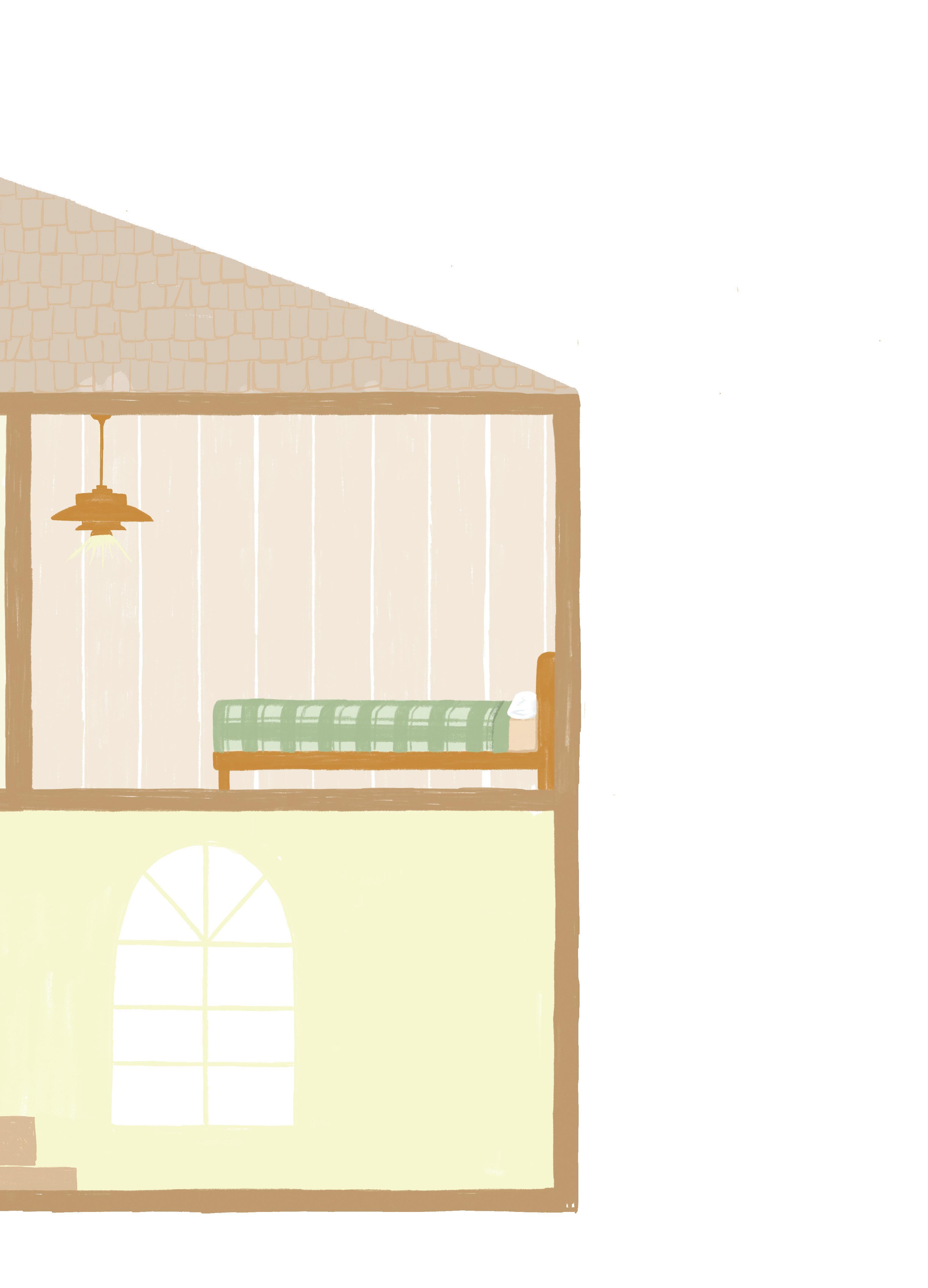
• is furniture arranged in a walkable path?
• are you using remotes or voice devices?
• are there throw rugs and loose carpets?
• are there loose objects on the floor?
• is there a switch at the top and bottom of stairs?
• are stair rails sturdy and tight?

Taking preventive steps to protect yourself or a loved one will help you maintain an active, independent life.

for staying strong & safe
TALK TO YOUR DOCTOR ABOUT MEDICATION SIDE EFFECTS & GETTING SUFFICIENT VITAMIN D
GET SCREENED FOR OSTEOPOROSIS
GET YOUR EYES CHECKED ANNUALLY
EAT & DRINK SUFFICIENT CALCIUM
EXERCISE FOR STRENGTH & BALANCE

By Tamsy Thompson, RN guest contributor
Ilove traveling. I get to meet so many people and learn about cultures that are very different from mine. Many countries I’ve visited are still developing their public health practices and have higher rates of infectious disease than we do in the United States. Knowing what to look out for will make your international travel experience safer and more enjoyable.
I once sat down at a restaurant in Peru with two other solo travelers I had met. My new friends ordered a local delicacy called ceviche, which is raw fish cured with lemon juice and salt. One of my dining companions said, “I saved the ceviche until the end of my trip, just in case I get sick.” While he said it was delicious, I stuck to my thoroughly-cooked seafood risotto.

I did not want to tempt fate. Around 25% of people report diarrhea while traveling internationally, usually caused by consuming food or water that has been contaminated by bacteria, viruses, or parasites. In some countries, it is not safe to get ice in drinks, brush your teeth with tap water, or eat raw fruits and vegetables.
Using basic hygiene, drinking bottled water, and eating foods that are thoroughly cooked and served hot are the main ways to prevent getting a “stomach bug”. Getting vaccinated against hepatitis A and typhoid fever will also help protect you against common foodborne illnesses.
The only time I had diarrhea while traveling was on a cruise ship. Ninety percent of gastrointestinal outbreaks
on cruises are caused by norovirus, a common cause of vomiting and diarrhea. Symptoms can be treated with Pepto-Bismol or Imodium, which is more expensive if you buy it on the ship. Some types of traveler’s diarrhea may not respond to these medications, so your doctor or a travel clinic should be consulted for recommendations. Be prepared for any voyage by taking a first aid kit that includes over-thecounter and prescription medications. You don’t need to know everything about your destination, but some basic research can help be prepared, depending on when and where you’re going. Essential information would include weather forecasts, disease outbreaks, current political situation, health care/ travel insurance, how much money to bring based on the exchange rate, basic words and phrases in the local language, maps of the area, driving rules, and phone/internet access.
When I went to China, I noticed that several travelers in my group were affected by the air pollution and unfamiliar spicy food. Others were uncomfortable with the custom of bartering with vendors, and a few of them asked me to get souvenirs for them because I had done it before and knew the “rules”.
While traveling with my sisters in Scotland, I was the only one who checked the weather beforehand. While the light jackets they brought would normally be fine for April, my winter jacket was a better choice for the cold front that came through and dropped six inches of snow in Edinburgh.
do some hiking and see Christmas lights. While I knew it was going to rain, I underestimated how the cold, wet air would affect my asthma. I hadn’t brought my inhaler like I should have, which is a reminder to always take extra medications, and keep them with your carry-on luggage in their original packaging. Check with the country’s embassy on what medicine you are allowed to bring, since there are several countries that have strict regulations, even for products like Benadryl and Sudafed.
Altitude is another topic to consider, especially if you live at a lower elevation. Since our bodies need time to adjust, going higher than 5,000 feet a day carries the risk of altitude sickness. Back in Peru, I witnessed multiple tourists who were struggling to breathe at high-elevation sites. You can condition yourself by hiking and staying overnight at higher altitudes before your trip, and your doctor can prescribe medication that can prevent and treat altitude sickness. You’ll also want to drink plenty of fluids and eat small, consistent meals.

Speaking of eating, as I parted ways with my two dinner companions who had taken a risk with Peruvian ceviche, we all agreed that the people we met there were some of the kindest we had ever encountered. It’s a beautiful world out there, yet by comparison, we probably take for granted how safe our food, water, and environment are back home.

I wasn’t quite as prepared when I was in Vancouver, Canada by myself to
See inside back page for services offered by the SWUPHD Travel Clinic!


The story of two college wrestlers getting mauled by a grizzly bear in Wyoming made international headlines back in October, 2022. One of the survivors, Brady Lowry, is originally from Cedar City, Utah and agreed to share his experience with us.
HEALTH MAGAZINE:
So, that weekend started with you and three teammates going to the mountains to look for antlers. Were you aware of any bears in the area?
BRADY: I had seen bears there before, but we walked the whole ridge as a group that day with no problem, so I was feeling pretty confident. Eventually, Orrin and Gus wanted to get back to the truck and started down while Kendell and I circled around and dropped just below where we had already been, still looking for horns.
About five or ten minutes after we split up, we got into some thick trees and brush. I crouched down to crawl through and was met by a big pile of fresh bear crap. I looked back at Kendell to tell him when I heard a crash - I didn't have time to do anything except yell “Bear! Bear!” as I turned and saw a grizzly charging toward me. In a split second it was pushing me with its head and throwing me around with its paws. That's when I realized there's not a thing I could do - they're so powerful.
What happened next?
The bear dragged me about 50 yards away and pushed me up against a rock in a little ravine as Kendell was throwing sticks and rocks from above, yelling and screaming. I was yelling and screaming myself as the bear bit into my arm and snapped it, then started chewing on my back while pouncing on me with its paws, bruising my whole body. Kendell finally decided he wasn't going to watch me get eaten, so he scrambled down the hill and grabbed the bear by the scruff of the neck and yanked its head away from me. I remember looking through the bear's legs and seeing Kendell running as it took off after him.
That bought me some time to get out my phone and call 911 for help. I also



spotted the other guys down below and was able to get to them. But now we were afraid that Kendell hadn’t survived. It turns out he had been attacked twice and torn up pretty bad before the grizzly threw some dirt on him and walked away. Gus found him, hurt but alive, and the four of us made our way toward a farm field that was about a mile below.
How did you make it back?
We couldn't get off that mountain fast enough and kept looking over our shoulders. I couldn’t feel my arm, it was just dangling. Kendell was losing a lot of blood. Our adrenaline was still going, though. He was in really good spirits and joking around, which really cheered me up, too.
Once we made it over the fence into the field, a farmer who had seen us picked us up in a side-by-side and drove us all the way back to the trailhead where an ambulance was waiting. They hooked Kendell up to IVs and did everything they could to stop the bleeding. He was still talking and making everyone laugh. Then I took the ambulance while he was transported by lifeflight. We ended up recovering in the hospital for several days, although he had to get more plastic surgery done afterwards on his face.
Interview with Brady continued on next page




left: Brady and his father (Dallas Lowry) during his hospitalization in Billings, Montana right: Brady and Kendell during recovery

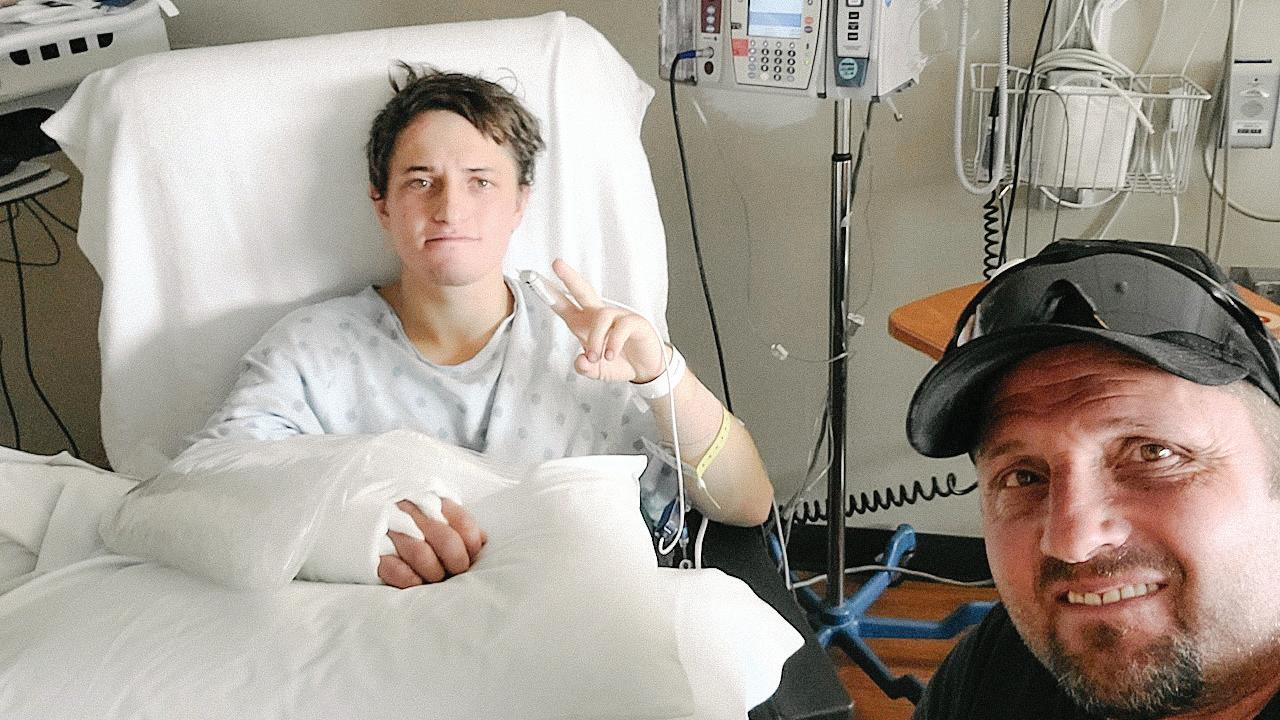


Kendell and I don’t have anything against the bear. The way I look at it, if a stranger came into my house and was walking through my bathroom, I probably wouldn't be too happy about it, either. I think we surprised it, for sure - and it didn't know what to do besides fight.
What was your recovery like?
Well, I got back to the outdoors pretty quick. I was attacked in October, but I had a hunting tag for whitetail deer in November. I wasn't wrestling at the time, so I took off and drove to Idaho to hunt. It was sketchy at first, being by myself outside in the dark. When I started hiking, I thought “what am I doing?” Then I realized this was what I loved to do more than anything in the world and nothing was going to stop me. Kendall and I went hiking soon after, back in Wyoming. I guess that was our therapy. We tried to stay away from the bears, of course.
We also started training together to get back into wrestling. I actually qualified for Nationals in February 2023 and ended up taking 5th place as an All-American in March. It was rough, but it was worth it all.




We had all kinds of people come to Northwest College to interview us about surviving the attack; Cowboy State Daily, ABC, MeatEater. ESPN did an awesome article about it (The college wrestlers who took on a grizzly bear, by Ryan Hockensmith)
Have you guys ever been back to the spot where you were attacked?
We did, yes. Brave Wilderness is producing a documentary about it and sent a crew last year to hike with us into the exact spot where it happened. It was definitely an eerie feeling. I haven’t really had any nightmares or trauma from the attack, I think I use that experience for the better, not drag me down. It's a cool story to look back on. Just two weeks ago, Brave Wilderness took us to Alaska where we saw up to 30 bears a day and got right up close to hang out with the big grizzlies. It was great!
What did you learn from your experience? Would you have done anything differently?
I had bear spray with me that day but couldn't get to it in time. Gus and Orrin had a firearm but we had split up. Now, every time I go up to the mountains, I'm well prepared with both. It also showed me that it’s easy to let your guard down. It was just another day in the hills and we had done it so many times. So it's not only what you take with you; it’s looking around and knowing your environment. I always like to be able to see my surroundings - I don't like going through the thick stuff.
And in the circumstance you were in two years ago, it was the people you were with that made all the difference… That bear would have killed me, for sure. Those guys are like brothers to me. That’s how the wrestling community is; all four of us are there for each other and always will be. It's good to have friends like that.
What are you up to now?
I graduated last spring with a criminal justice degree and I’m going to plumbing school up here in Lewiston, Idaho. I love the outdoors, so I’m hunting or hiking every chance I get. I’m excited about bow-hunting elk in September. Then I’m debating whether I want to go after a whitetail or mule deer this year. Probably whitetail.






Studies on emotional resiliency and recovery after a traumatic event show that certain factors are likely to prevent post-traumatic stress disorder (PTSD) from developing afterward. Dr. Debra Kissen, PhD, MHSA summarizes a literature review that identifies what makes a difference:
• CONTINUOUS CONTACT WITH AND SUPPORT FROM IMPORTANT PEOPLE IN YOUR LIFE
• DISCLOSING THE TRAUMA TO LOVED ONES
• IDENTIFYING AS A SURVIVOR AS OPPOSED TO A VICTIM
• USE OF POSITIVE EMOTION AND LAUGHTER
• FINDING POSITIVE MEANING IN THE TRAUMA
• HELPING OTHERS IN THEIR HEALING PROCESS
• HOLDING THE BELIEF THAT YOU CAN MANAGE YOUR FEELINGS AND COPE


By David Heaton, health editor
consider these recent news headlines: Bear mauls teen as he watched TV in cabin ♦ Dad pries 5-year-old-son from jaws of mountain lion ♦ Swimmer breaks free after crocodile chomps his leg ♦ Grandfather killed by swarm of bees while working on ranch ♦ Florida authorities on high alert after 3 shark attacks in a single day ♦ Jogger mauled by gang of otters.
There’s something terrifying about the possibility of facing an aggressive wild animal (or several of them, like the bees and otters). These unexpected encounters can range from heart-pounding near misses to life-threatening traumas. Stories of animal attacks are both shocking and fascinating, which might explain why Jaws is one of the highest grossing movies of all time.

Whether it's venturing into the water or the woods, the fear of being attacked by something dangerous can replace enjoyment with anxiety. While it's wise to be prepared for potential danger, it also helps to have an understanding of the actual risk.
Figuring out which animals are the most dangerous to humans can get complicated. Numbers for attacks and deaths can vary, depending on the source. We’ll be sharing numbers in the conservative range as we focus on animal-caused fatalities, and narrow those risks to the United States and Utah.
The deadliest animal in the world when it comes to a physical confrontation is also the largest living reptile: the saltwater crocodile, which has a bite twice as strong as a great white shark. They kill about 1,000 people a year, but are not found in the Western Hemisphere. Second place goes to a vegetarian that lives near water in Africa: the hippopotamus. They are extremely territorial and will charge at vehicles, boats, and people, resulting in 500 deaths a year.
Only about 10 people die by shark attack each year, with an average of one in the United States. You are more likely to be killed by a pet dog or a lightning strike. The chance of being killed by any of the fearsome beasts we hear about in stories, movies, and headlines is surprisingly low, even if you live where they do.
Utah is home to about 1,200 adult mountain lions (also called cougars). While there have been attacks, there is no record of a person being killed by one in our state. If you encounter one, you should stop and not run. Keep eye contact, raise your arms to look larger and speak firmly. Throw rocks, sticks, or use bear spray if necessary. If you are attacked, fight hard; most people have been able to drive mountain lions away.
There are three bear species in the United States. Polar bears are limited to Alaska, where the state’s first fatal attack in 30 years occurred in 2023. Grizzly bears, also called brown bears when found inland, are responsible for most bear deaths (80 in the last 240 years). It’s best to curl up and play dead if attacked by one. They are likely to be aggressive when guarding territory, food, or cubs, especially if surprised. Black bears are the most common, and are the only type found in Utah, where they are the largest predator. Still, they are mostly vegetarian and tend to avoid people. The state’s only known fatality from a black bear occurred in 2007 in American Fork Canyon. If you come across a black bear, stand your ground. Don’t run or play dead. It’s not necessarily being aggressive if it stands up or woofs. Give it a chance to leave as you
prepare to use bear spray or other deterrents. In the rare case you are attacked, fight back.
Since we don’t have saltwater crocodiles or hippos in the U.S., the animal most likely to kill us in a physical confrontation is…a deer. That confrontation occurs when a driver accidentally collides with a deer on the roadway, a scenario that takes over 400 lives annually. That number, however, and the other figures mentioned so far, pale in comparison to the deaths caused by animals in other ways around the world.
Tsetse flies, kissing bugs, and freshwater snails each cause around 10,000-15,000 deaths per year by transmitting parasitic diseases unheard of in the United States. Dogs kill 25,000 people per year through bites that infect people with rabies, a disease that is 99.9% fatal. Canine rabies has been eliminated in the U.S.
Venomous snakes are the second deadliest animal in the world overall, causing 75,000 deaths a year. The sawscaled viper is believed to be responsible for more deaths than any other species and lives in the Eastern Hemisphere. Although Southwest Utah is home to venomous rattlesnakes, there have been only 5 recorded deaths in the state, and 4 of them were the result of handling or trying to kill the snake.
By far, the grim award for the most dangerous animal goes to the mosquito. Among the 3,500 species of this tiny insect, less than 10% carry pathogens that can cause disease in humans. Their bites infect and kill an average of 780,000 people annually, with devastating diseases like malaria, dengue, West Nile virus, Zika virus, and Chikungunya virus. These diseases are rarely found in the U.S., except for West Nile virus, which arrived in 1999 and is the country’s deadliest mosquito-borne disease. The most recent data reported 79 fatalities in 2022. Utah had three West Nile virus deaths in 2021. While our country has minimal mosquito-borne disease activity due to climate and public health measures, those illnesses continue to take a heavy toll in tropical and subtropical regions of the world, especially in developing countries.
Only about 1% of the world’s animal species pose a threat to humans. Your risk of having a negative interaction with an animal depends on where you live, what you’re doing, and how you respond, but the chances of being killed by a shark, bear, deer, otter, or mosquito are minuscule for most of us. We should be paying far more attention to preventing the most likely causes of death in Utah, the first being heart disease, followed by cancer, accidents, Alzheimer’s disease, COVID-19, stroke, lung disease, diabetes, and suicide.



skin cancer is the most common cancer in the United States. Some people are at higher risk of skin cancer than others, but anyone can get it. The most preventable cause of skin cancer is overexposure to ultraviolet (UV) light, either from the sun or from artificial sources like tanning beds.
The skin is the body's largest organ. Skin has several layers, but the two main layers are the epidermis (upper or outer layer) and the dermis (lower or inner layer). Skin cancer begins in the epidermis, which is made up of three kinds of cells:

SQUAMOUS CELLS: Thin, flat cells that form the top layer of the epidermis.
BASAL CELLS: Round cells under the squamous cells.
MELANOCYTES: Cells that make melanin and are found in the lower part of the epidermis. Melanin is the pigment that gives skin its color. When skin is exposed to the sun, melanocytes make more pigment and cause the skin to darken.
Basal and squamous cell carcinomas are the two most common types of skin cancer. They begin in the basal and squamous layers of the skin, respectively. Both can usually be cured, but they can be disfiguring and expensive to treat.
Melanoma, the third most common type of skin cancer, begins in the melanocytes. Of all types of skin cancer, melanoma causes the most deaths because of its tendency to spread to other parts of the body, including vital organs.
Most cases of skin cancer are caused by overexposure to UV rays from the sun, tanning beds, or sunlamps. UV rays can damage skin cells. In the short term, this damage can cause a sunburn. Over time, UV damage adds up, leading to changes in skin texture, premature skin aging, and sometimes skin cancer.
A change in your skin is the most common sign of skin cancer. This could be a new growth, a sore that doesn't heal, or a change in a mole.
Not all skin cancers look the same. A simple way to remember the warning signs of melanoma is the A-B-C-D-Es:
Asymmetrical: Does the mole or spot have an irregular shape with two parts that look very different?
Border: Is the border irregular or jagged?
Color: Is the color uneven?
Diameter: Is the mole or spot larger than the size of a pea?
Evolving: Has the mole or spot changed during the past few weeks or months?
Talk to your doctor if you notice skin changes or the A-B-C-D-Es of melanoma.
Anyone can get skin cancer, but people with certain characteristics are at greater risk:
• Lighter natural skin color.
• Skin that burns, freckles, reddens easily, or becomes painful in the sun
• Blue or green eyes.
• Blond or red hair.
• Certain types or large numbers of moles.
• A family history of skin cancer.
• A personal history of skin cancer.
• Older age.
Protection from UV rays is important all year, not just during the summer. UV rays can reach you on cloudy and cool days, and they reflect off of surfaces like water, cement, sand, and snow. In the continental United States, UV rays are strongest from 10 a.m. to 4 p.m. during daylight saving time (9 a.m. to 3 p.m. standard time).
The UV index forecasts the strength of UV rays each day. If the UV index is 3 or higher in your area, protect your skin from too much exposure to the sun:
• Stay in the shade.
• Wear clothing that covers your arms and legs.
• Wear a hat with a wide brim to shade your face, head, ears, and neck.
• Wear sunglasses that wrap around and block both UVA and UVB rays.
• Use a broad spectrum sunscreen with a sun protection factor (SPF) of 15 or higher.
• Avoid indoor tanning.
source: Centers for Disease Control & Prevention

By Josh Poulsen, environmental health scientist, guest contributor
air is the most important component for human life on Earth, yet we don’t often think about how affected we are by it. When it’s hot we want it to be colder and when it’s cold we want it to be hotter. When we exercise we need more of it and when we sleep we use less of it. Air contains about 21% oxygen, which is needed for human metabolism as well as the combustion of fuels like coal and natural gas that power our homes, cars, and power plants.
When the air looks hazy outside, it’s because there is more particulate matter in the air. These particles can come from human sources like vehicle emissions, wood burning stoves, and industrial pollution or natural processes like forest fires, strong windstorms, and unusual weather patterns. Polluted air can clear up in a relatively short amount of time after an event

like a windstorm as fine sand and dust particles settle back to the ground. Contamination lasts longer when the buildup from daily activities like driving and industry becomes trapped by cold air, a condition known as inversion, which is especially evident in the valleys of northern Utah.
Air quality can be determined by the amount of particulate matter (PM) in the air, more specifically the size of the particles, which is measured in microns. A human hair is about 60 microns wide and fine sand is about 90 microns wide. Air quality is a public health concern because when inhaled, PM that is 10 microns wide or smaller can travel deep into the lungs and cause or aggravate heart and lung diseases. When PM in the air is higher, there is an increase in emergency room and doctor visits as well as absenteeism from school and work.
Short term exposure to air pollution can cause coughing, shortness of breath, irritation of the eyes, and irregular heartbeat. Long term exposure can cause reduced lung function, respiratory illness, aggravation of existing heart disease, and even premature death in people with existing lung diseases. Those with pre-existing lung and heart conditions, along with children and the elderly, are among those who are most at risk for complications from poor air quality. Even exercising or working outdoors during times of high PM conditions can increase your risk.
An Air Quality Index (AQI) was created by the Environmental Protection Agency (EPA) to establish a national standard of how air quality is reported to the public. The five factors of the AQI are particulate matter, sulfur dioxide, carbon monoxide, nitrogen dioxide, and ozone. The AQI is based on a 1-500 scale and six risk categories indicating the quality of the air:
GOOD (AQI 0 -50): Satisfactory; little or no risk.
MODERATE (AQI 51-100): Acceptable, although respiratory symptoms may be experienced by sensitive groups of people (children, older adults, people with heart and lung disease).
UNHEALTHY FOR SENSITIVE GROUPS (AQI 101-150):
While the general public may not be affected, sensitive groups are at greater risk of adverse health effects.
UNHEALTHY (AQI 151-200): Everyone may begin to experience some adverse health effects, with sensitive groups at risk of more serious symptoms.
VERY UNHEALTHY (AQI 201-300): Triggers a health alert signifying that everyone may experience more serious health effects.
HAZARDOUS (AQI 300+): Triggers a health warning of emergency conditions affecting the entire population.
In Washington County, there are 4 air monitoring stations run by various government agencies. We also have a group called the Air Quality Task Force that is addressing air quality issues on a regular basis. This task force consists of representatives from local industry, municipalities, the Southwest Utah Public Health Department, and Utah’s Department of Environmental Quality. Input from private citizens is also welcomed. The purpose of the task force is to get all stakeholders involved to find ways of maintaining good air quality in the region without vehicle emissions requirements or other federal oversight.
We enjoy great air quality most days of the year in our part of the state. When high-risk days do occur, limit outdoor activities, don’t use a wood burning stove if you have another heat source, combine driving trips, and avoid vehicle idling. This will protect your health as well as the health of your family and community.
This article was originally published in the Summer 2018 issue of HEALTH Magazine. Josh currently works for the Utah Department of Agriculture and Food’s Regulatory Division, covering Washington, Kane, and Garfield counties.

FOR SENSITIVE GROUPS
In August 2024, Saint George, Utah averaged 'GOOD' air quality, all month long!


"IT'S
By Lindsay Chandler, swuphd Health Educator
The desert regions of Southwest Utah have over 300 days of sunshine a year, and the allure of outdoor recreation can be irresistible. However, with high temperatures, especially during the summer, heat injury can become a concern. Without immediate treatment, heat exhaustion can lead to heat stroke, a life-threatening condition. Fortunately, both are preventable! Here's your guide to enjoying the great outdoors with heat safety in mind.
Look for destinations with milder climates or higher altitudes to escape the scorching heat. Southwest Utah has many mountain retreats, where breezy forests can offer relief from sweltering temperatures.
Consider visiting indoor attractions, such as museums, galleries, or theaters where you can cool off while enjoying cultural experiences. Infants and chil-
dren younger than 4, as well as adults older than 65, are at a higher risk of heat exhaustion. The body's ability to regulate temperature isn't fully developed in children. For older adults, illness, medications, and other factors can affect temperature control.
Plan outdoor activities during the cooler parts of the day, such as early morning or late afternoon, and avoid strenuous activities during peak heat hours, typically between 10 a.m. and 4 p.m.
When planning a day or time, make sure to look at the National Weather Service HeatRisk website (wpc.ncep.noaa.gov/heatrisk). NWS HeatRisk is an experimental color-numeric-based index that provides a forecast risk of heat-related impacts to occur over a 24-hour period. HeatRisk takes into consideration how unusual the heat is for the time of the year, how long the temperatures will last, including both daytime and nighttime temperatures, and if those temperatures pose an elevated risk of heat-related impacts based on data from the CDC.
When choosing what to wear, keep in mind that sunburn affects your body's ability to cool itself. Start by protecting yourself from the sun’s harmful UV rays by bringing wide-brimmed hats, sunglasses, and a broad-spectrum sunscreen with an SPF of

at least 15. Apply sunscreen generously and reapply every two hours, more often if you're swimming or sweating.
Pack lightweight, breathable clothing in light colors to reflect sunlight and keep you cool. Avoid wearing too much clothing or tight-fitting clothing, as it won't allow your body to cool properly. Wearing moisture-wicking fabrics that dry quickly can minimize discomfort from sweat, and help prevent heat exhaustion that could potentially lead to heat stroke. It is also essential to carry a refillable water bottle and stay hydrated throughout the day. Consider adding an electrolyte drink mix to your water to replenish minerals lost through sweating from strenuous activity.
Take advantage of water-based activities to stay cool and refreshed. Whether it's swimming, kayaking, or paddle boarding, these activities offer a fun way to beat the heat while exploring your destination. Find a nearby water park, one of our many reservoirs, miles of river banks, or a public pool where you can enjoy aquatic adventures with friends and family.
With careful planning and consideration, you can enjoy unforgettable experiences while staying safe and cool.
PROLONGED EXPOSURE TO HEAT AND DEHYDRATION.
Symptoms include heavy sweating, headache, pale/cool/moist skin, fatigue, weak/rapid pulse, dizziness, muscle cramps, and nausea/vomiting. You should:
• Stop all activity and rest.
• Move to a cooler place.
• Drink cool water or sports drinks.
• Contact your doctor if your symptoms get worse or they don't improve within one hour.
BODY NO LONGER ABLE TO SWEAT AND COOL DOWN
Symptoms include high body temperature (103°+), red/hot/dry skin, rapid/strong pulse, rapid breathing, throbbing headache, dizziness, nausea/vomiting, altered mental state, and unconsciousness. This is a medical emergency! You should:
• Call 911.
• Get the person into shade or indoors.
• Remove excess clothing.

• Lower the person’s body temperature using any available method—immerse them in cold water, spray them with a garden hose, fan them while misting, or apply ice packs or cold, wet towels to their head, neck, groin, and armpits.

By Daniel Cole, swuphd Environmental Health Scientist
c amping in Utah is a truly unforgettable experience. From the red rock formations of Zion National Park to the snow-capped peaks of the Wasatch Range. Millions of people flock to this state each year to experience the great outdoors and get back to nature. However, one aspect of wilderness adventure that is often overlooked is sanitation. Proper sanitation is not only a matter of personal comfort but also one of environmental stewardship. Thankfully, by following some simple guidelines and practicing “Leave No Trace” principles, you can help maintain the beauty of

Utah's wilderness while keeping yourself and others safe and healthy.
One of the most important aspects of camping sanitation is waste management. Whether you are camping in a developed campground with designated facilities or in the backcountry, it is crucial to properly dispose of all waste. This includes human waste, trash, and gray water. In developed campgrounds, you will typically find facilities such as restrooms, trash cans, and

dishwashing stations. It is important to use these facilities whenever possible and to follow any posted guidelines for waste disposal. When using restrooms, be sure to properly dispose of all waste and toilet paper in the designated receptacles. Never dump gray water or trash on the ground or in water sources, as this can contaminate the environment and harm wildlife.
In the backcountry, proper waste disposal is even more critical. It is important to follow the principle of "pack it in, pack it out." This means that you should carry out all of your trash, including food scraps, fruit peels, wrappers, and toilet paper. Do not bury or burn trash, as this can harm the environment and attract wildlife. Properly disposing of human waste is important to avoid polluting water sources, minimizing the chances of spreading disease, and maximizing the rate of decomposition. So, when nature calls, be sure to follow Leave No Trace principles for human waste disposal.
In a typical forest, digging a “cathole” for onetime use may be an acceptable method for disposing of human waste. To use a cathole, bury your waste in a hole dug 6-8 inches deep and 70 big steps away from water, trails, and campsites. After use, cover the hole with soil and pack out any used toilet paper in a sealable bag. Do not bury feminine hygiene products, as these can take years to decompose.
While a cathole might be effective in a forest, it can take years for waste to decompose in our arid deserts and alpine zones. When exploring these locations, it is required to pack out your waste and toilet paper. The most convenient and sustainable option is a WAG (Waste Alleviating and Gelling) bag. These are self-closing human waste containers complete with crystals or gels to neutralize the dangerous pathogens. Just make sure to keep it in a separate, exterior pocket in your pack, so the bag doesn’t mix with sunscreen or even worse, food.
In the wilderness, it can be challenging to stay clean. However, practicing good personal hygiene is essential to prevent illness. Wash your hands frequently with biodegradable soap and water, especially before eating or preparing meals. Keep in mind that “biodegradable” means that the soap will eventually break down in the soil, not that it has zero impact. If water is scarce, your best friend is hand sanitizer. Never dump soapy water from hands or dishes
directly into a water source, as this can stimulate the growth of algae and harm aquatic life. Instead, collect any food particles with a strainer or cheesecloth and scatter the water over a large area 200ft away from water sources to allow it to filter naturally into the soil. It's best not to eat leftover prepared foods from day to day as these can become a breeding ground for harmful bacteria when temperatures are above 40 degrees. Instead, plan to east single-serve entrees to save on waste and bulk.
Your camping or backpacking trip won't last too long if you don't have clean drinking water. Even though the clear water flowing in rivers and streams may look refreshing, it could still be home to bacteria, parasites, viruses, and other contaminants. To avoid getting sick, always treat water before drinking it. Boiling water for at least one minute (3 minutes if above 6500 ft) using a water filter or using water purification tablets are effective methods for making water safe to drink. Above all, stay away from stagnant wading pools or swamps, which are likely to be rich with parasitic life.
When venturing away from camp, make sure to protect your food from insects and animals. Keeping flies and rodents away from your food protects you from diseases they may be carrying. When leaving food unattended, use proper food storage techniques for the location, such as bear canisters or hanging it at least 10 feet off the ground and 4 feet away from trees to prevent wildlife from accessing it. Never feed or approach wild animals, as this can habituate them to human presence and lead to dangerous encounters.
Lastly, make sure you are prepared for emergencies. Despite taking precautions, accidents can happen in the wilderness. Be prepared for emergencies by carrying a first aid kit, navigation tools, and communication devices such as a cell phone or satellite messenger. Know how to treat common outdoor injuries and illnesses, and be prepared to seek help if needed. Most importantly, always let someone know your travel plans.
By following Leave No Trace principles and practicing good hygiene, you can help protect Utah's natural beauty and wildlife while keeping yourself and others safe. Remember to pack out all waste, treat water, dispose of gray water properly, and wash your hands regularly to ensure a safe and enjoyable outdoor experience. Stay informed, stay prepared, and stay safe on your next wilderness adventure in Utah!
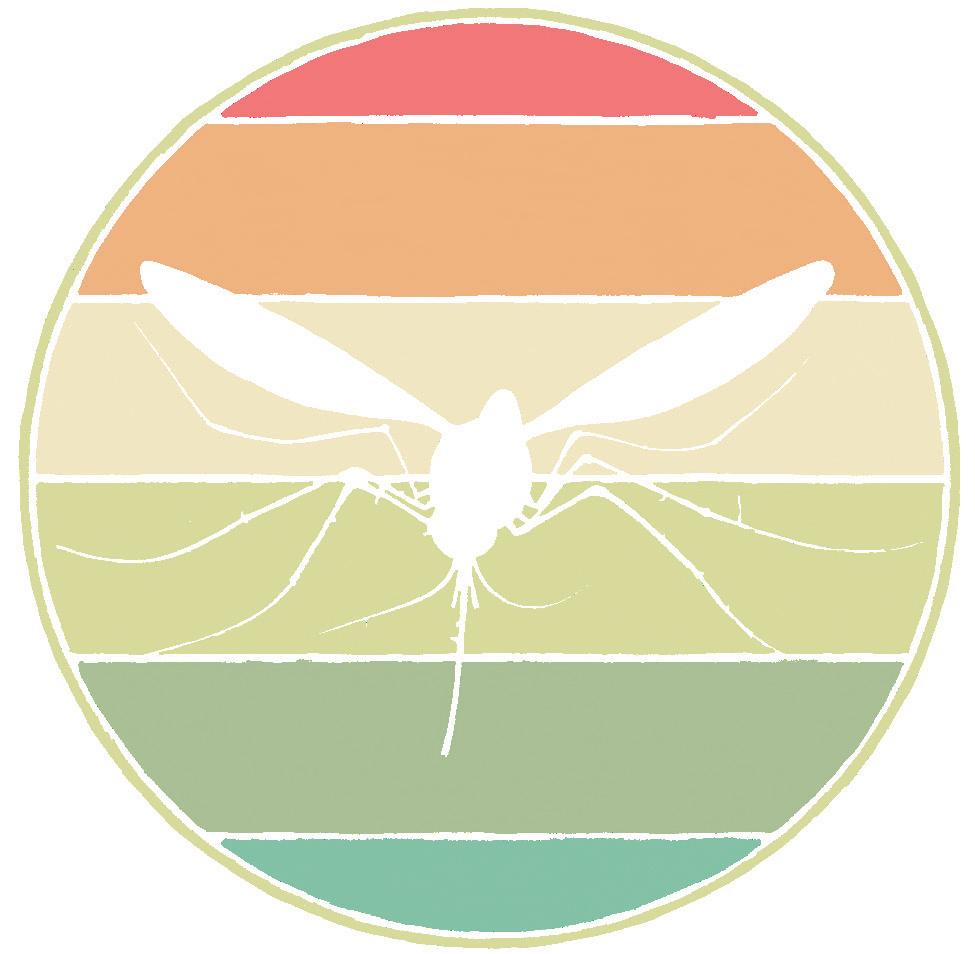
By Sean Amodt, Southwest Mosquito Abatement District Administrator, guest contributor
here in Southern Utah, we are enthralled with beautiful red rock landscapes rising above the desert floor, amazing sunsets, and weather overflowing with sunshine.
This is also home to some of the deadliest animals on the planet, kept in check by a team of highly-skilled professionals who work tirelessly to keep us safe as we go about our daily lives. Due to the effectiveness of the Southwest Mosquito Abatement and Control District, we are often asked if we even have mosquitoes here. Our response is, “You’re welcome”. There’s more to it, of course, so here’s the story:
Mosquito control in our part of the state is primarily the task of individual landowners.

In 2002, however, after West Nile virus had been introduced to the United States, voters in Washington County approved a portion of their annual property tax (about $3-$5 per household) to create a special service district to help alleviate the potential health threat from mosquitoes in the area.
Many people are aware of only two types of mosquitoes: the one buzzing around and the one smashed on your arm. Actually, there are over 22 different species that inhabit Southwest Utah, each with their own unique appearance and behavior. Some are marked with beautiful patterns of scales on their wings, or they are black-bodied and peppered with white scales. Many have white bands on their legs or proboscis (tubular mouthpart), while
others are all black, all white, or red-orange in color.
Many of the mosquitoes we encounter are nuisances but don’t carry any disease. They can still bite, though, puncturing your skin with their proboscis and injecting an anticoagulant (blood thinner) into the area so they can suck up your blood. This ‘saliva’ causes an allergic reaction, making your skin swell and itch.
For mosquitoes that do carry disease, it is this ‘saliva’ that transfers viruses into your own system. That is why it is important to avoid bites by using repellents, wearing proper clothing, and avoiding times when mosquitoes will be out in abundance - like dawn, dusk, and throughout the night in the hottest parts of summer.
While all mosquitoes feed on sap or nectar for nourishment, only the females bite living organisms because they need the nutrients from blood to develop their eggs.
Some mosquito species develop in floodwaters where their eggs had previously been laid in the mud. These can hatch out in huge numbers all at once. Other mosquitoes can travel for miles looking for blood meals and stagnant pools of water to lay their eggs in small rafts on top of the water. Still others lay their eggs randomly in urban areas where they can find any small container of water.
Mosquitoes spend most of their lifecycle in the water. They hatch from an egg into a larval form, using the surface tension of the water to attach their siphon (straw-like tube) to the top for breathing while using little hairs to shovel food (bacteria) into their mouths.
only toxic to the mosquito larvae that feed on it. For pupae, which don’t feed, a surfactant is used to break the surface tension of the water, causing them to sink and eventually drown. For long-term treatment, mosquito-specific growth hormones are used, causing mosquito pupae to grow too fast and emerge deformed and/or sterile.
Mosquito larvae are found in swampy areas, flooded pastures, cattle ponds, storm catches, and drains. They can also be found in desert sandstone pools and mountainous snow-melt ponds.
We have recently found an invasive species that prefers artificial containers in urban environments, like old buckets, wheelbarrows, tire swings, and plant pot bases. These mosquitoes are most likely being introduced through bagged potting soil and manure transported from infested areas. It only takes one good rainstorm or overwatering to hatch out the eggs hidden in the mix, so it’s a good idea to empty out standing water on your property as soon as possible.
These mosquitoes have the potential to carry tropical diseases such as dengue fever, yellow fever, and the Zika virus, but we’re not very concerned since those diseases are extremely rare or nonexistent in the U.S.
Southwest Utah is home to over 22 species of mosquitoes, including 5 species that can carry diseases harmful to humans

Their final stage in water is as pupae, which is like a floating cocoon where they rest and develop into adults. Eventually the pupal skin will split and the adult will emerge, resting on the top of the water until their wings dry. Then, they will breed or go find a blood meal.
Because mosquitoes spend so much of their life in an aquatic environment, mosquito abatement technicians look for and treat suitable water sources if larvae are found. The most commonly used treatment is a bacteria that is

Mosquitoes that could carry malaria are also found here, but this disease hasn’t been a problem in the U.S. since it was eradicated in the mid 1900s. The United States sees about 2,000 imported (travel-related) malaria cases each year.
The most likely local mosquito-borne disease we would detect is West Nile virus (WNV). Mosquitoes that carry WNV prefer to feed on birds with humans and horses as secondary blood sources. WNV usually won’t manifest any symptoms in healthy people, but can be deadly in rare cases, especially among the aging.
WNV is found in our mosquito population almost every season, but our abatement efforts help keep this virus - and potentially others - from spreading.
a quick convenient way to get your flu shot!
SAINT GEORGE - SEPT. 24, 2024
CEDAR CITY - SEPT. 28, 2024
KANAB - OCT. 5, 2024
BEAVER - OCT. 9, 2024
PANGUITCH - OCT. 17, 2024

SCAN FOR MORE INFO OR VISIT SWUHEALTH.GOV/FLU
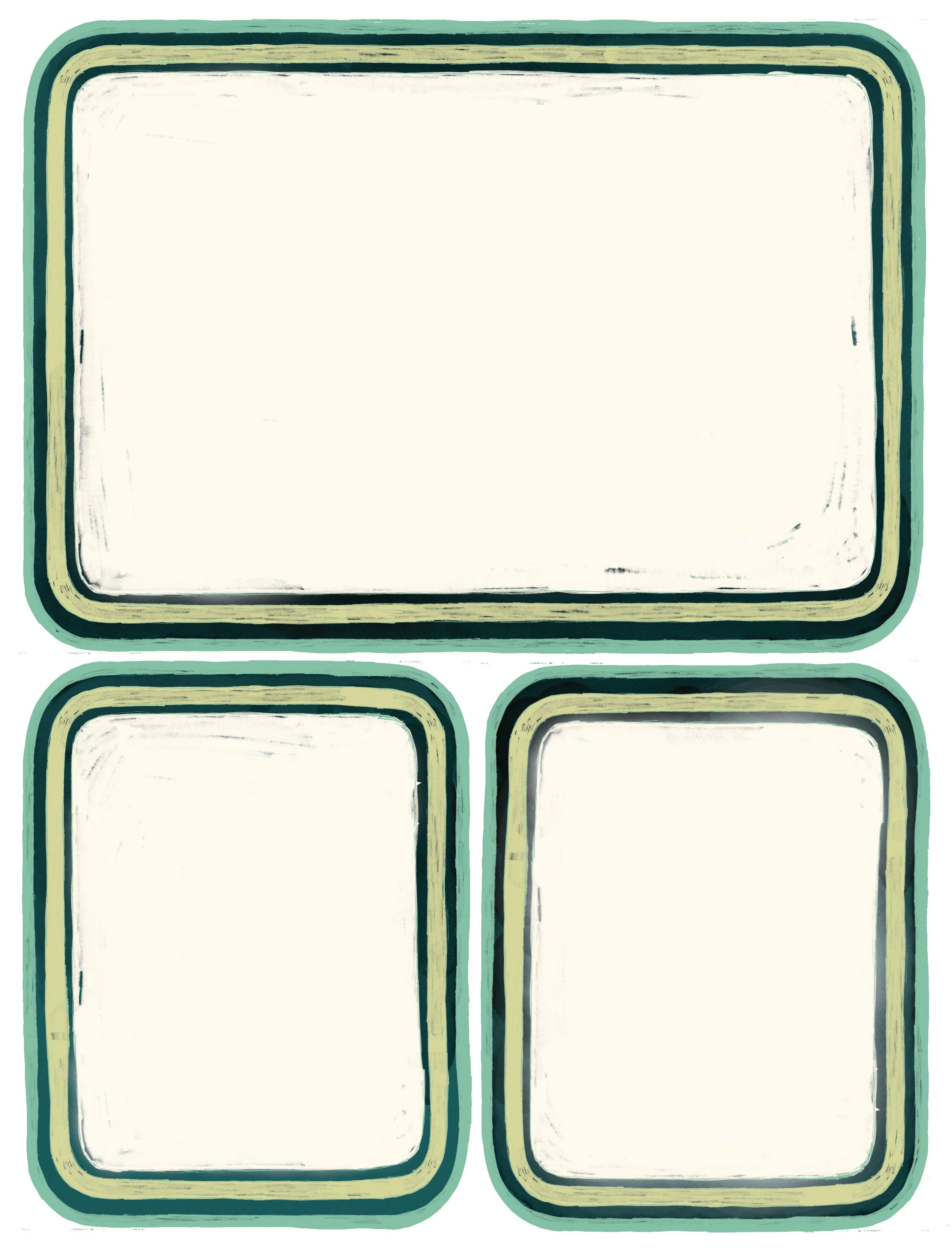



& DIABETES PREVENTION WITH FREE CLASSES, SCREENINGS, AND MORE!



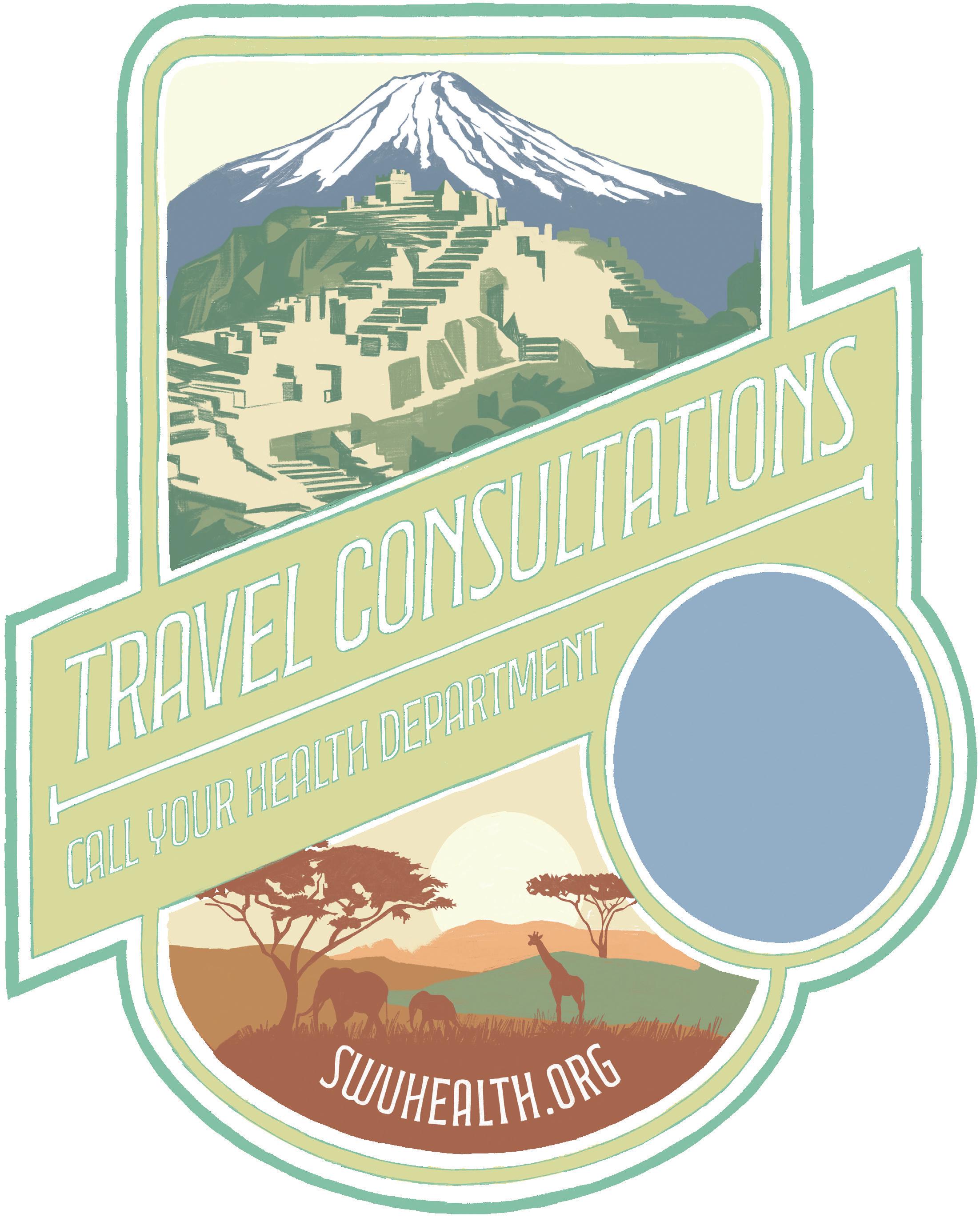
We can provide travel medication prescriptions for Malaria, Travelers' Diarrhea, High Altitude Sickness, Motion Sickness and vaccines for Yellow Fever, Typhoid, Cholera, Japanese Encephalitis, Chikungunya; as well as Tdap, Hepatitis A & B, Measles, Mumps, and Rubella, and more! PLUS learn about the diseases prevalent in the country of travel, civil unrest, natural disasters and other things that will affect your stay!




